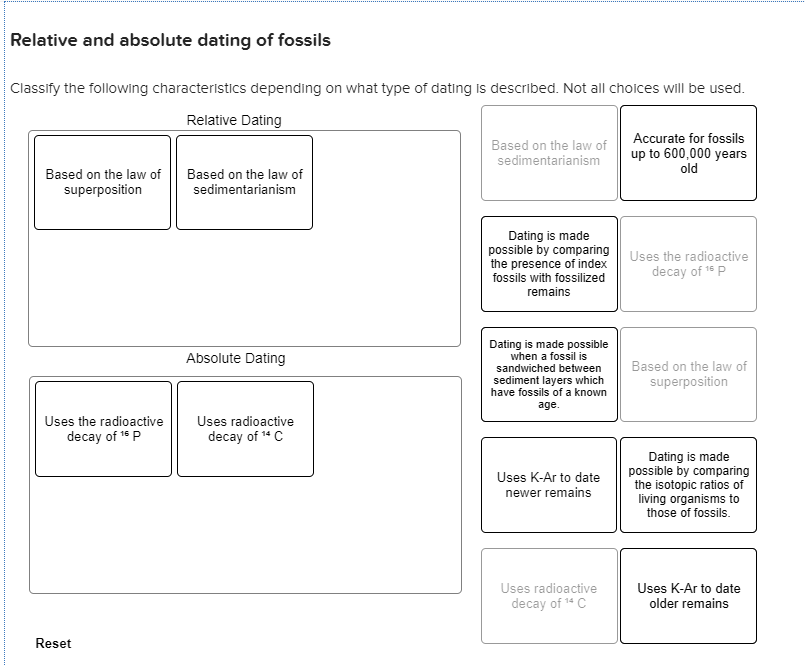As radioactive isotopes of elements decay, they lose their radioactivity and become a model new element generally recognized as a daughter isotope. Beta Decay is when a neutron in its nucleus splits into an electron and a proton. The new proton will increase the element’s atomic quantity by one, forming  a brand new component with the identical atomic mass as the parent isotope. For example, 234Th is unstable and undergoes beta decay to kind protactinium-234 (234Pa), which additionally undergoes beta decay to form uranium-234 (234U).
a brand new component with the identical atomic mass as the parent isotope. For example, 234Th is unstable and undergoes beta decay to kind protactinium-234 (234Pa), which additionally undergoes beta decay to form uranium-234 (234U).
About 3 million years ago, a model new type of clue appeared in the rock layers of eastern Africa – objects made by our hominin ancestors. Hominins started to reside their lives differently, utilizing tools made of stone of their day-to-day activities. Sharp stone tools allowed hominins to cut wooden more simply or strip meat from bones.
Relative courting methods
However, by itself a fossil has little meaning unless it’s positioned inside some context. The age of the fossil have to be determined so it can be in comparison with different fossil species from the identical time period. Understanding the ages of related fossil species helps scientists piece together the evolutionary historical past of a bunch of organisms.
Relative and absolute dating
1 40K-40Ar courting requires splitting samples into two for separate K and Ar measurements. An update to 40K-40Ar courting was developed to be able to scale back this error. This up to date method, 40Ar-39Ar dating, requires just one pattern and makes use of a single measurement of argon isotopes. The aforementioned steps are carried out, but an additional course of is launched which relies on neutron irradiation from a nuclear reactor to convert 39K (stable) into 39Ar (unstable). A normal reference materials of identified age is irradiated at the same time as the unknown samples, making it potential to use a single measurement of argon isotopes to calculate the 40K/40Ar ratio and acquire an age.
However, if the bone is 70,000 years or older the amount of 14C left within the bone shall be too small to measure precisely. Thus, radiocarbon courting is simply helpful for measuring things that have been shaped within the relatively recent geologic past. Luckily, there are strategies, such because the generally used potassium-argon (K-Ar) methodology, that permits courting of materials which might be past the limit of radiocarbon relationship (Table 1).
North carolina office of state archaeology
The comparatively quick half-life of carbon-14, 5,730 years, makes relationship reliable solely up to about 60,000 years. The approach usually can’t pinpoint the date of an archeological website higher than historic records but is very efficient for precise dates when calibrated with other relationship techniques such as tree-ring courting. These assumptions and this observation permit us to document series of fossils that happen in numerous layers of rocks. As we travel to increasingly places, correlating stratigraphic sequences of organic succession as we go, we assemble a grand sequence of fossils, oldest at the bottom and youngest at the high. For comfort we divide the long sequence of fossils into sections and title them. The names are often based on locations at which rocks of that particular age were first well-studied and characterize the interval of time throughout which a particular set of organisms existed.
This method is helpful for dating events such as the burial of an object, firing of pottery, or heat treatment of stone instruments. It is critical to have the flexibility to separate when a material (a rock, for example) was shaped versus when it was altered and buried (after warmth remedy as a stone tool). Scientists are capable of record the change in Earth’s magnetic area over time.
A dncr agency
We can then use these absolute dates to put those events so as and understand how people’s lives modified over time. “No fossil is buried with its delivery certificates,” wrote the famend science editor Henry Gee in his 2000 treatise, In Search of Deep Time. While true, fossils are buried with loads of clues that enable us to reconstruct their historical past.
How do scientists date rocks and fossils?
Scientists and technicians trained in varied lab strategies run the labs, and they’ll analyze samples (such as bone or rock) to document its primary information. The half-life of potassium-40 is 1,310 million years, after which half of its substance will have changed into secure argon-40. “We tried an revolutionary application of a newer concept — cryptotephras — to historical buried soils,” Ludvigson stated. The concept refers to laboratory separation of microscopic fragments of volcanic ash in soils that are not visible to the bare eye to seek out the volcanogenic zircon crystals.